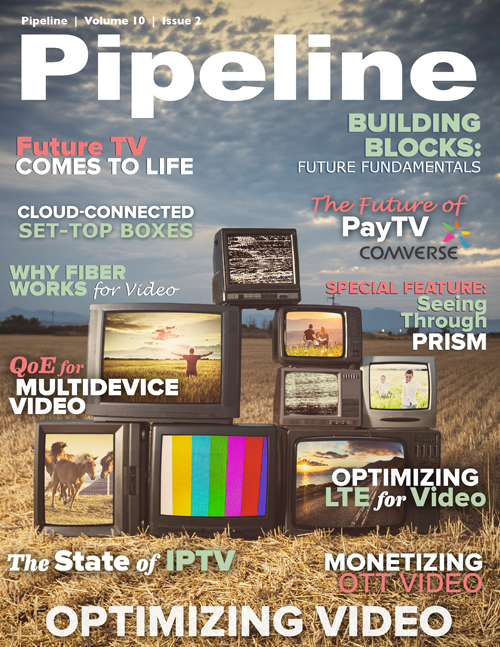Hybrid Set-Top Boxes and the Cloud
Time Warner Cable has also embraced the cloud and is slowly moving away from traditional delivery methods. In June the company introduced TWC TV, an application that streams its content directly to Samsung Smart TVs without an STB go-between. Thanks to cloud delivery, users are no longer tethered to the media gateway in their homes.
The hard drive and chipset that support DVR functionality take up a large amount of space in many STBs and significantly impact their energy consumption. As Comcast has indicated with the XI3, DVR functionality is a prime candidate for cloud migration, but unlike the XI3, Boxee’s sub-$100 Cloud DVR has already hit the market, offering unlimited cloud storage of video programs for $10 a month. Comcast began making portions of its digitally encrypted signal available to Boxee devices in April.
Cablevision pioneered the technology for cloud-delivered DVR, otherwise known as RS-DVR (the first two letters stand for “remote storage”), back in 2006, but major content providers, from CNN and NBC to movie studios like Paramount and Universal, objected and even filed suit to prevent such systems from seeing the light of day. Several years later, however, Cablevision emerged victorious and now offers 160 gigabytes (GB) of network-based video storage for about $11 per month. And Cisco’s Videoscape Multiscreen Cloud DVR solution gives video service providers yet another option, supplying full “anytime, anywhere” DVR and video functionality to any connected device.
The evolution of video consumption
The second factor that’s speeding the STB toward the end of its life cyle is the manner in which video is consumed. Contemporary society has progressed from the days of appointment-based viewing in static locations—the family living room, a local bar—to the era of “TV Everywhere,” in which consumers expect to be able to view any content on any device whenever and wherever they want. But the STB, much like a collar chaining a dog to its own backyard, simply doesn’t support this evolution.
The pay-TV landscape is also much more complex today, and with more distributors than ever before. Many cable customers additionally subscribe to Netflix, Hulu Plus, Amazon Prime, and other moderately priced OTT video services, but the current crop of STBs isn’t capable of accommodating OTT content in any meaningful way. Competing appliances like Microsoft’s Xbox 360, Google TV and the Roku streaming player, on the other hand, can corral these disparate distribution arms under one roof.
The winners in the video race “are companies who can integrate across all devices, across all platforms with a common interface,” said Comcast’s Brian Roberts in his Cable Show presentation. But whether as a hybrid device or a pure cloud offering, a home-media gateway must be aligned with users’ viewing habits, and STBs in their current form just aren’t up to the task.
It’s just a flesh wound
While the demise of the STB seems certain, there are some technological hurdles that will keep the aging devices on life support for the time being. First, it isn’t clear whether TVs will get smarter and STBs will actually disappear or if TVs will function solely as terminals and STBs will persevere in various incarnations. LG, for example, is playing both sides of the fence: the company introduced both IP-enabled STBs and USB dongles at Cable Show 2013.
Second, many service providers’ networks aren’t capable of handling cloud-delivered DVR and millions of simultaneous high-definition (HD) streams in a reliable way that conveys the quality of service (QoS) consumers expect. Traffic management is a real concern: about 20 million users stream an average episode of American Idol in HD each week through traditional STBs. Shifting this burden to the cloud requires some serious horsepower and capacity. “There is still a little ways to go to delivering that kind of quality in real time to that many people,” said Jonathon Gordon, AVP of marketing for Allot Communications, in an interview with Pipeline. “I don’t see the end of the capacity crunch.”
Current incarnations of cloud-delivered DVR are proof of the work that still needs to be done. Early reports from users and analysts indicate that it’s not quite ready for prime time, susceptible to both long response times and buggy behavior, but as network transport becomes speedier and more reliable, these wrinkles are likely to be ironed out. Comcast is confident its network is up to the task, and the world will find out when the Xfinity X2 platform launches toward the end of the year.



















